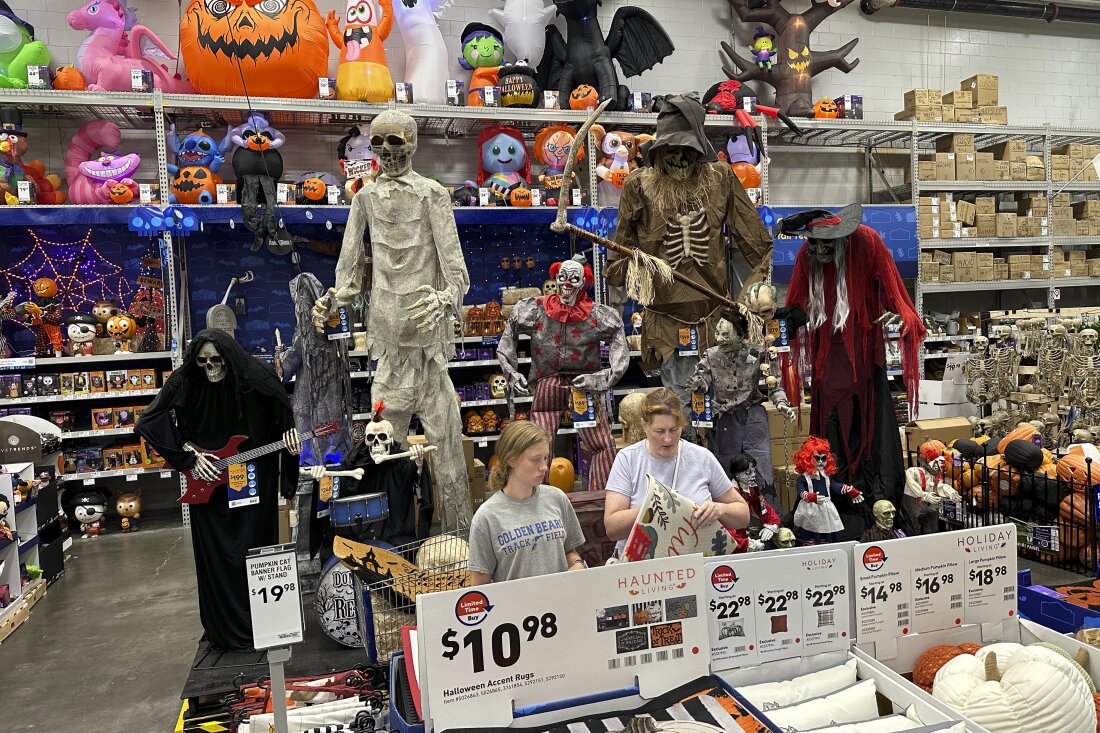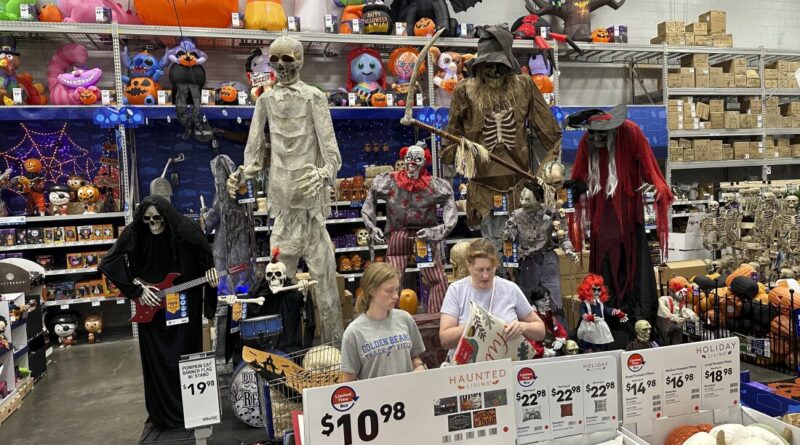In a way it’s pumpkin spice season. Why the feeling of autumn is here earlier than ever

People browse the Halloween displays at a Lowe’s Home Improvement store in East Rutherford, NJ, on Aug. 30. 2023.
Ted Shaffrey/AP
hide description
toggle caption
Ted Shaffrey/AP
Summer is weeks away, but ghosts, goblins and pumpkin spice lattes are back.
“Summerween” is the time of year when big-box retailers start promoting all-weather sweatshirts even though shorts and flip-flops are still in season.
It’s been a habit for a while now. But this year, fall and Halloween-related merchandise is appearing earlier than ever.

Home Depot was considered the first major retailer to launch Halloween merchandise with an online campaign that began in April — six months before the holiday. Lowe’s, Party City and Michaels all started selling some of their seasonal items online in June, earlier than in previous years.
And on Thursday, Starbucks began offering its seasonal pumpkin spice and apple spice flavors in the coffee chain’s first announcement. So what causes the fall?
The return of Halloween
Market experts say retailers often look for early holiday promotions to prevent unsold inventory or beat their competitors to success. They say the first launch is also a sign that customer needs are changing, especially since COVID.
Lowe’s, Michaels and Party City all cited increased consumer demand as the reason for their early announcements. Home Depot similarly told NPR that a major driver of its “Halfway to Halloween Sale” was early interest in Halloween enthusiasts, adding that several items from its April sale are they sold out quickly.
That’s no surprise to Peter Fader, a marketing professor at the University of Pennsylvania’s Wharton School.
“When I was in college, the idea of doing anything for Halloween would have been horrifying,” he said. “But if you look at college students today, they embrace Halloween.”

According to Fader, Halloween is no longer considered a children’s holiday or just a matter of trick-or-treating. Instead, it’s becoming more popular among adults, and that enthusiasm grew after the COVID-19 lockdown.
In the years leading up to the outbreak, Halloween spending was falling in the US, from $9.1 billion in 2017 to $8 billion in 2020. Fast forward to 2023, and US consumers have spent a record of $12.2 billion in Halloween merchandise. , according to estimates from the National Retail Federation.
Fader says some ideas are changing at the seasonal retailer Spirit Halloween, which has become a mainstay associated with fall itself. Part of the store’s popularity is how its clothing and other merchandise continue to be traditional.
“I think it really opened the door, sealed it, and made it more than just for young kids,” she said.
Can sellers be too quick when they start issuing?
George John, a marketing professor at the University of Minnesota’s Carlson School of Management, says these first-time ads also have a better chance of success now — compared to 20 years ago — because of consumer data. and online shopping.
“Now they have bigger and better ways to slice and dice who’s buying what and when they’re buying it. And so, [they] they have a better ability to run more targeted ads,” he said. “As the ability to use data has increased, so has the temptation to use it. “
But John added that even with more sophisticated information about consumer behavior, marketers can still be vulnerable to being too fast and can reduce the sense of urgency.
He said: “If they make every holiday a period, it loses its meaning and loses its power.”

Fader also believes it’s possible for retailers to be “too early” on the fall and Halloween bandwagon. He also said that lowering assets prematurely could damage the value of companies.
“There can be business problems,” he said. “If you take things off the shelf and put things on the shelf that people don’t want at the time, you’re hurting yourself.”
#pumpkin #spice #season #feeling #autumn #earlier
